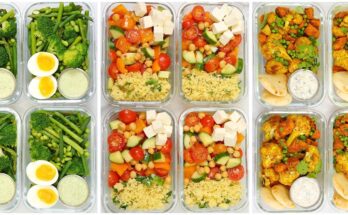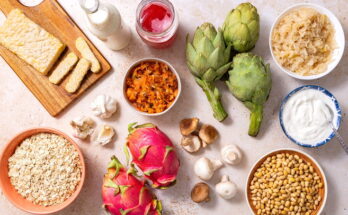Best Baked Beans Recipe: Baked beans are one of those dishes that instantly evoke warm memories of family barbecues, chilly winter nights, and comfort food at its best. Whether they’re served alongside grilled meats or simply enjoyed with a slice of crusty bread, baked beans offer a rich, hearty, and wholesome flavor that satisfies deeply. But what makes baked beans such a universal favorite? It’s the perfect blend of sweetness, smokiness, and a hint of tang — all slow-cooked into tender, melt-in-your-mouth beans.
This dish isn’t just delicious; it’s incredibly versatile. You can go vegetarian, spice it up, or even toss in bits of bacon or sausage. The best part? You don’t need to be a professional chef to make a mouthwatering batch. It’s all about starting with quality ingredients, having a little patience, and following the right steps.
A Quick History of Baked Beans
Baked beans have roots that trace back to Native American cuisine, where beans were slow-cooked with maple syrup and bear fat in earthen pots. When European settlers arrived, they adapted the recipe, introducing pork and molasses into the mix. Over time, this simple dish evolved into a household staple across North America and the UK.
The canned versions you find in grocery stores today are convenient, but they often lack the depth and richness of homemade varieties. When you prepare baked beans from scratch, you’re connecting to centuries of culinary tradition — and the results are well worth the extra effort.
Essential Ingredients for the Perfect Baked Beans
Choosing the Right Beans
The foundation of any great baked beans recipe is, unsurprisingly, the beans. While you can technically use any variety, some beans work better than others in absorbing flavors and maintaining their texture during long cooking times.
Top choices for baked beans:
- Navy Beans: These are the classic choice. Small, creamy, and capable of soaking up every drop of flavor.
- Great Northern Beans: Slightly larger with a mild taste — a good alternative to navy beans.
- Pinto Beans: These provide a heartier texture and a slightly nutty flavor.
Soaking the beans overnight is crucial. It not only shortens cooking time but also improves digestibility and helps the beans cook evenly. If you’re in a rush, the quick soak method (boiling and resting for an hour) works too.
Sweet and Savory Flavor Enhancers
This is where baked beans truly come alive. The balance of sweet and savory ingredients creates a rich, layered taste that’s both nostalgic and addictive. Here’s what you’ll need:
Sweeteners:
- Brown Sugar: Adds depth and molasses-like richness.
- Molasses: A traditional favorite that gives beans their dark, robust character.
- Maple Syrup: For a more natural sweetness with a touch of smokiness.
Savory Elements:
- Onions and Garlic: These aromatic vegetables form the base of your flavor.
- Bacon or Salt Pork: Adds that irresistible smoky flavor (optional for vegetarians).
- Mustard: A bit of Dijon or yellow mustard cuts through the sweetness and brings balance.
- Tomato Paste or Ketchup: Introduces a tangy element and enhances umami.
Spices:
- Smoked Paprika or Chili Powder: Adds warmth and complexity.
- Black Pepper and Salt: To taste.
Getting the balance right is the key. Too much sweetness can overpower the dish, while too little makes it bland. Start light and adjust as you go.
Kitchen Tools You’ll Need
Must-Have Equipment for Baked Beans
Cooking baked beans from scratch doesn’t require a fancy kitchen, but having the right tools makes a big difference.
Essentials:
- Large Dutch Oven or Casserole Dish: Ideal for slow, even cooking.
- Mixing Bowls: For prepping ingredients ahead of time.
- Wooden Spoon or Heatproof Spatula: Helps in sautéing and stirring.
- Colander or Sieve: For rinsing and draining soaked beans.
If you’re using a slow cooker or Instant Pot, those work beautifully too — just adjust the cooking times accordingly.
Tips for Preparing Ingredients Efficiently
Prepping ahead can make the process smoother and more enjoyable. Chop all your onions, garlic, and any meats before you start. Measure out your wet and dry ingredients so they’re ready when needed.
Some cooks swear by sautéing onions and garlic until golden before adding to the beans. This step unlocks their natural sweetness and adds another layer of flavor. Want to elevate your recipe even further? Render your bacon until just crisp before combining everything — the fat adds unbeatable richness.
Step-by-Step Instructions
Soaking and Preparing the Beans
Start by sorting through your dried beans to remove any debris or broken pieces. Then rinse them thoroughly under cold water. Place them in a large bowl and cover with at least three inches of water — they’ll expand as they soak. Leave them overnight, or use the quick soak method (boil for 2 minutes, then soak off-heat for 1 hour).
After soaking, drain and rinse the beans. Add them to a pot with fresh water, bring to a boil, and simmer until they’re just tender — this usually takes about 45 minutes. Don’t fully cook them at this point, as they’ll continue softening in the oven.
Creating the Flavor Base
In your Dutch oven, cook chopped bacon until the fat renders out and the pieces are golden. Remove bacon and set aside, leaving the fat in the pot. Sauté onions and garlic until soft and translucent.
Add in your tomato paste, mustard, brown sugar, and molasses. Stir well and let it cook for a few minutes to deepen the flavor. Then, add the partially cooked beans and enough water or broth to cover them by an inch. Stir everything together and bring to a gentle simmer.
Taste and adjust seasoning — add salt, pepper, and a touch of vinegar or lemon juice if needed to balance the sweetness.
Baking the Beans to Perfection
Preheat your oven to 300°F (150°C). Cover the Dutch oven and bake for about 2-3 hours. Stir occasionally and add more liquid if the mixture looks dry. In the last 30 minutes, uncover the pot to let the sauce thicken and caramelize slightly.
The end result? A bubbling, flavorful pot of beans that smells incredible and tastes even better.
Pro Tips for Flavor and Texture
Adjusting Sweetness and Spice
One of the beautiful things about baked beans is how customizable they are. Depending on your taste preferences or the occasion, you can tweak the balance of sweetness and spice to suit your needs. Let’s break it down:
If you like your beans on the sweeter side, you can increase the amount of brown sugar or molasses. However, do this gradually — a little goes a long way, and too much sweetness can overwhelm the dish. On the flip side, if you’re aiming for a more savory profile, reduce the sweeteners and add extra mustard or tomato paste for tang.
Want a bit of heat? Crushed red pepper flakes or a dash of hot sauce can transform a traditional recipe into something with a fiery twist. Smoked paprika also adds depth without making the dish too spicy.
Another tip: consider adding a splash of apple cider vinegar or lemon juice at the very end of cooking. Acidity can brighten the flavors and balance the richness, making the dish feel lighter and more dynamic.
Experimenting with spices like cumin, allspice, or even a touch of cinnamon can add unexpected flavor dimensions. The key is to taste as you go — let your palate be the guide.
Making Beans Creamy Yet Firm
Getting that perfect texture — creamy inside yet still holding their shape — is the holy grail of baked beans. Here’s how you can master it:
- Don’t overcook during pre-boiling: You want the beans to be tender but still slightly firm before they go into the oven.
- Slow and steady wins the race: Low and slow baking is crucial. It gives the beans time to absorb all the delicious flavors without turning mushy.
- Stir occasionally but not too often: Frequent stirring can break the beans apart. Instead, check once every 30–45 minutes to ensure there’s enough liquid and the beans aren’t sticking.
- Use enough liquid: But not too much. The beans should be just submerged when going into the oven. If things look dry during cooking, add a splash of hot water or broth.
- Finish uncovered: This helps reduce the sauce into a thick, sticky coating that clings to each bean.
If your beans end up too firm, they likely needed a bit more soaking or a longer cook time. Too soft? You may have overcooked them early on or stirred too aggressively. Like any great dish, perfecting baked beans might take a couple of tries — but it’s worth every bite.
FAQs about Best Baked Beans Recipe
1. What beans are best for baked beans?
Navy beans are the traditional choice for baked beans due to their soft texture and ability to absorb flavor. However, you can also use pinto beans or great northern beans.
2. Can I use canned beans instead of dried beans?
Yes, canned beans are a great time-saver. Just drain and rinse them before using to reduce excess sodium and improve taste.
3. How long do baked beans take to cook?
If you’re using canned beans, baked beans usually take 1 to 1.5 hours in the oven. Dried beans (soaked and pre-cooked) may take longer, up to 2 hours, for that rich, thick consistency.
4. What gives baked beans their signature flavor?
The magic combo: brown sugar, molasses, mustard, onions, and a splash of tangy vinegar. Add a bit of bacon or smoked paprika for that classic smoky taste.
5. Can baked beans be made ahead of time?
Absolutely. Baked beans actually taste better the next day as the flavors deepen. Store in the fridge and reheat gently before serving.
6. Are baked beans healthy?
Yes—especially if you control the sugar and salt. Beans are a great source of fiber and plant-based protein, making them a hearty, nutritious side dish.
Conclusion
There’s something undeniably special about homemade baked beans. It’s not just about the taste — though that’s undeniably incredible — it’s also about the process. The slow simmer, the layering of flavors, the aroma filling your kitchen, and the satisfaction of serving something made with love and care.
Whether you’re making them for a summer BBQ, a cozy winter dinner, or just a craving for comfort food, this baked beans recipe is your ultimate guide. It’s adaptable, reliable, and packed with the kind of flavor that canned beans can only dream of.
So go ahead — soak those beans, gather your ingredients, and get cooking. Because nothing says “home” quite like a warm, hearty bowl of perfectly baked beans.



